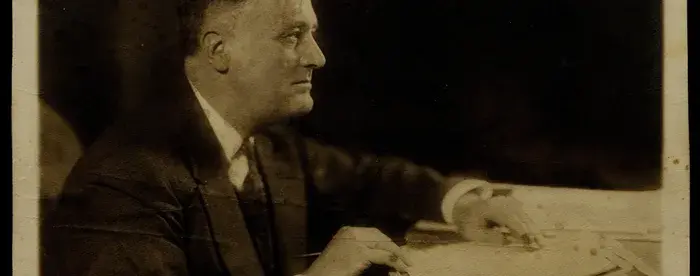Led by: Prof. Michael Neiberg (US Army War College)
Course Number: AMHI 656
Semesters: Fall 2018, Summer 2020, Summer 2022, Summer 2024 (Term II)
Image: A photograph of President Franklin D. Roosevelt inscribed “To the American Embassy in Tokyo from Franklin Roosevelt,” by Harris & Ewing, Washington DC, ca. 1938–1940 (The Gilder Lehrman Institute, GLC07527)
